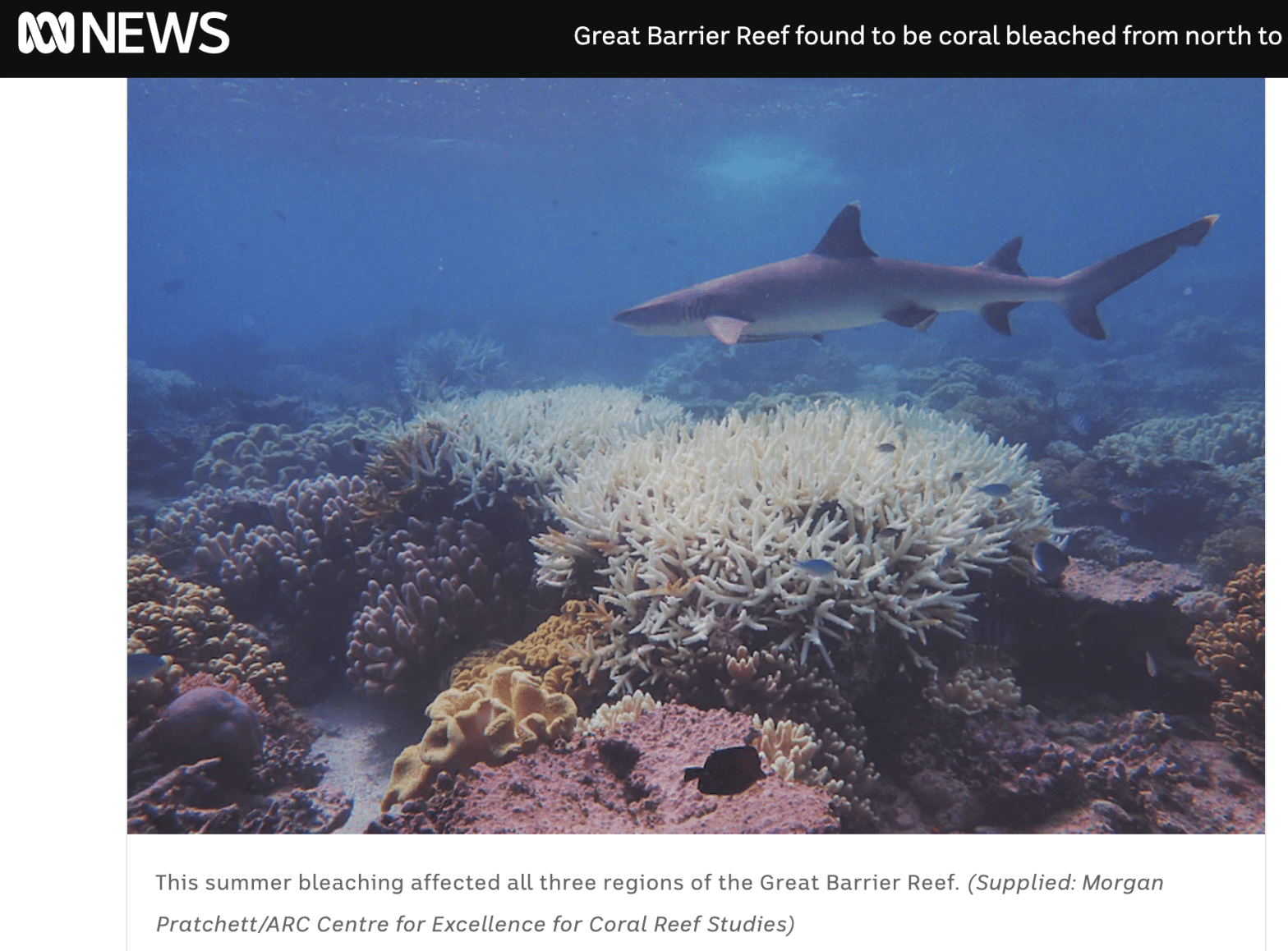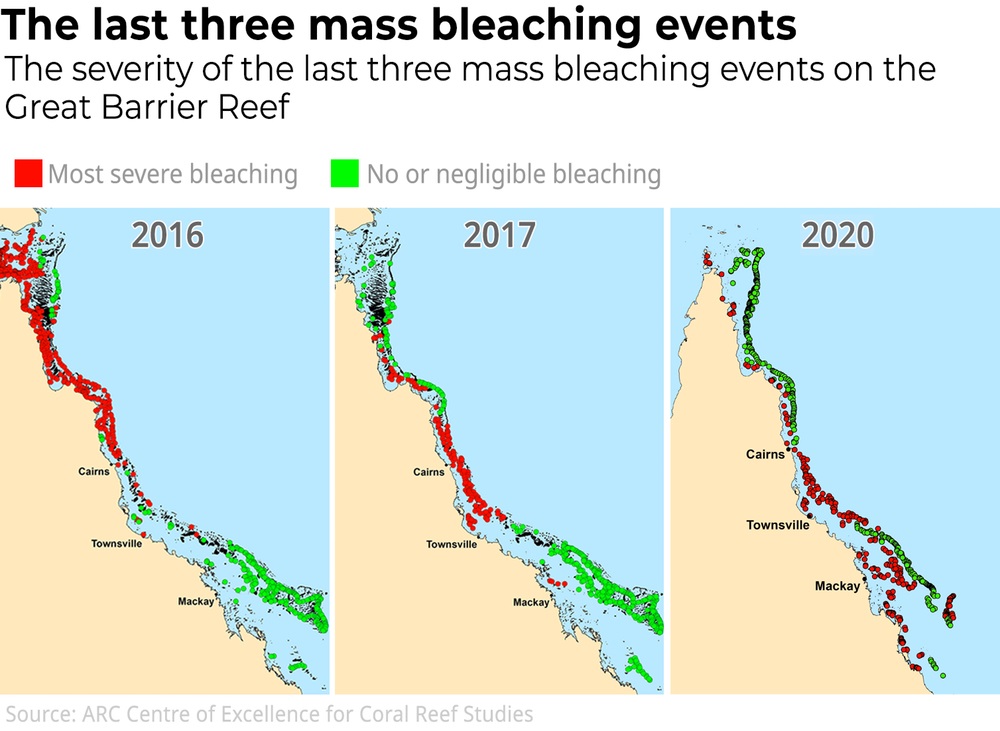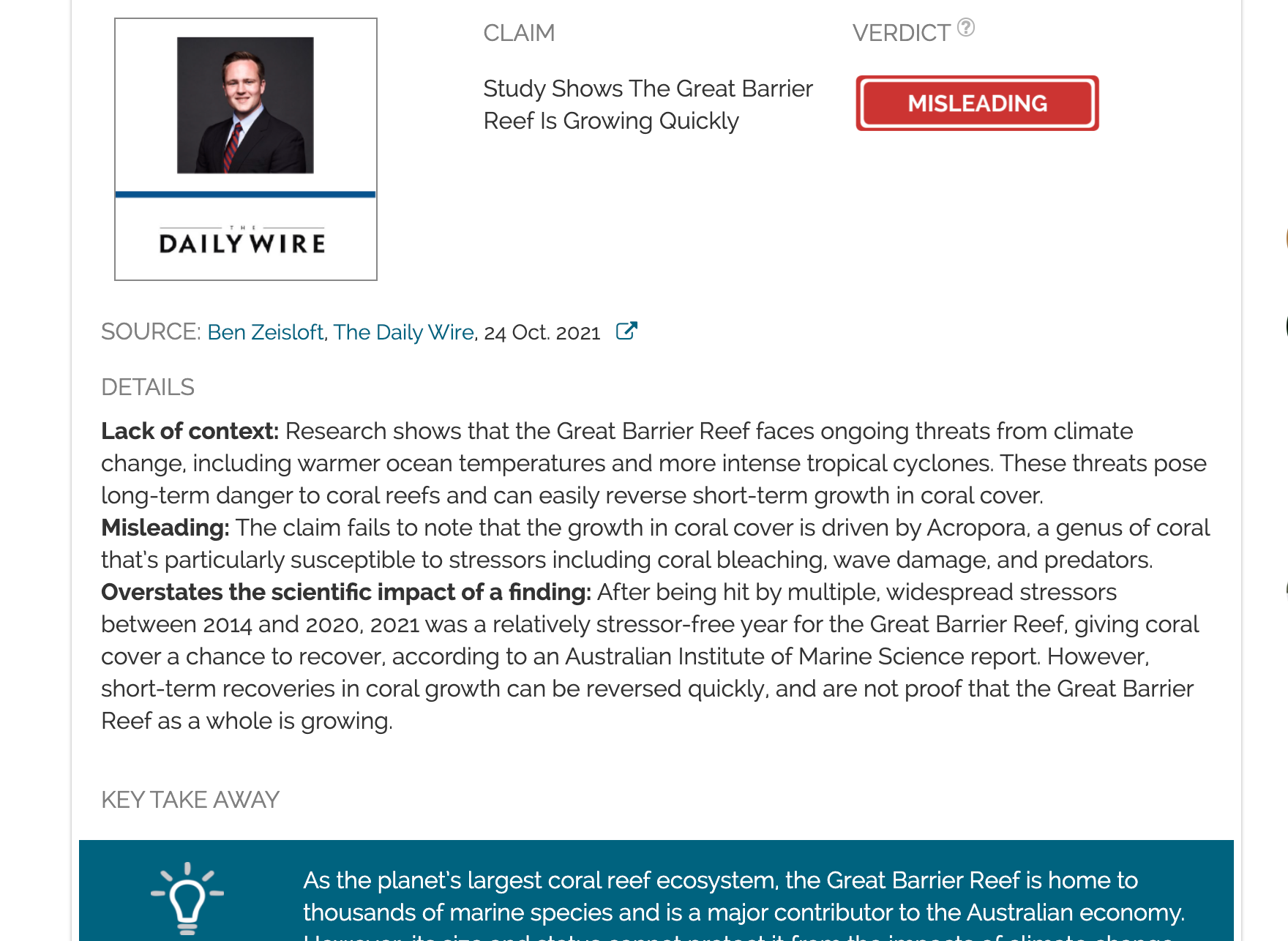- Climate
Scientists observe most widespread bleaching event ever recorded at The Great Barrier Reef
Key takeaway
Increased sea surface temperatures boosted by climate change have triggered five mass bleaching events in the Great Barrier Reef since 1998. In March 2020, scientists conducted aerial surveys and found that all three regions of the Great Barrier Reef were affected by bleaching, making this the most geographically widespread bleaching event observed to date.
Reviewed content

Verdict:
Claim:
The Great Barrier Reef is experiencing the most widespread bleaching ever recorded
Verdict detail
Accurate: For the first time, coral reefs in the northern, central, and southern regions of the Great Barrier Reef were affected by bleaching at the same time. At the time, there is no peer-reviewed study yet to fully document this bleaching event; it should be verified by underwater observations in the coming months.
Full Claim
The Great Barrier Reef is currently experiencing the most widespread bleaching ever recorded, with 60 per cent of reefs across all three regions affected, according to a detailed survey of the system.
Summary
The claim that “The Great Barrier Reef is experiencing the most widespread bleaching ever recorded” appeared in several media outlets, including an article published by ABC News in April 2020. This claim is based on data collected from aerial surveys conducted in March 2020, which found that 60% of coral reefs across all three regions of the Great Barrier Reef had moderate or severe levels of bleaching[1].
Bleaching occurs when corals expel algae and photosynthetic pigments from their tissues[2]. Although some coral species can recover from light levels of bleaching, severe bleaching can lead to mass mortality of corals[2,3]. Increased sea surface temperatures caused by climate change have triggered five mass bleaching events in the Great Barrier Reef since 1998[3,4]. These events occurred in 1998, 2002, 2016, 2017, and 2020[2,3,4].
In March 2020, Terry Hughes and James Kerry conducted aerial surveys of 1,036 reefs along the Great Barrier Reef in Australia. For the first time, they observed bleaching in the northern, central, and southern regions of the Great Barrier Reef, consistent with the claim that this is the most widespread bleaching event recorded.
In addition, “2020 is the second-worst mass bleaching event of the five experienced by the Great Barrier Reef since 1998,” Hughes wrote in The Conversation[1]. About a quarter of the coral reefs the scientists measured were severely bleached, where more than 60% of the corals in each reef were affected by bleaching.
The aerial data collected by Hughes will be verified by underwater observations in the coming months. Although this data is currently not peer-reviewed, it does support the claim that this is the most widespread bleaching event recorded in the Great Barrier Reef.
Scientists’ Feedback

Professor, ARC Centre of Excellence for Coral Reef Studies, James Cook University
The claim published by ABC that bleaching in 2020 is more widespread than earlier bleaching events (and second in intensity to 2016) is correct. It comes from the article I wrote in The Conversation on Tuesday, April 6[1].
My article provides three maps that show “For the first time, severe bleaching has struck all three regions of the Great Barrier Reef – the northern, central and now large parts of the southern sectors. The north was the worst affected region in 2016, followed by the centre in 2017.” The maps show unbleached reefs in green, and severely bleached reefs in red.
Figure—Surveys of the Great Barrier Reef show the location and severity of bleaching events in 2016, 2017, and 2020. Red circles indicate the most severe bleaching, whereas green circles represent little or no bleaching. Although 2016 was the most severe bleaching event ever recorded, the impacts were primarily in the northern regions. In 2020, severe bleaching was observed across all three regions of the Great Barrier Reef. From The Conversation.
REFERENCES
- 1 – Hughes et al. (2020) We just spent two weeks surveying the Great Barrier Reef. What we saw was an utter tragedy. The Conversation.
- 2 – Ainsworth et al. (2016) Climate change disables coral bleaching protection on the Great Barrier Reef. Science.
- 3 – Hughes et al. (2017) Global warming and recurrent mass bleaching of corals. Nature.
- 4 – Hughes et al. (2018) Ecological memory modifies the cumulative impact of recurrent climate extremes. Nature.




